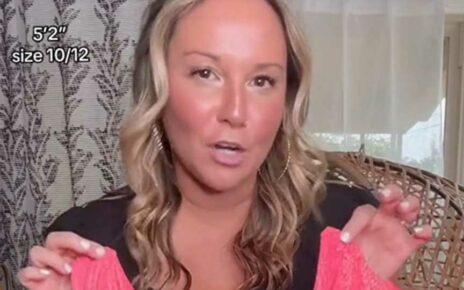Written by Laura Menéndez
Coming out as bisexual taught writer Laura Menendez how to truly embrace her own personal style once and for all.
I’ll just say it: I never actively wanted to belong in the LGBTQ+ community; I was sure I was straight when I was a teenager. I never fully understood what being bisexual meant, which meant that I didn’t know that I could even exist under the LGBTQ+ umbrella. Sure, I’d heard the word bisexuality – and had friends who identified as such – but the word didn’t ring true to me until I eventually accepted my attraction to girls.
As I became more confident in my sexuality and who that made me, I started gaining confidence in other areas of my life. My social life started to flourish and my style started to flourish. I tried taking the feminine clothes I’d always loved, such as denim miniskirts, and wearing them in a way that felt like it was in keeping with the woman I was becoming (read: wearing shorts underneath them, so I could cycle and do all the things I wanted to do without fearing a flash). Something never quite clicked though.
Despite finding comfort in certain areas of my life and style, it still felt entirely nebulous. It was only the more I delved into understanding my own bisexuality that my style started to finally feel like my own. Think about it: you may think you can picture what a lesbian, gay or straight person stereotypically looks like (stereotypically being the key word here). But what does a bisexual person look like? You’re not gay but you’re not straight either; and that state of in-between was becoming increasingly clear in my clothing.
Criminal psychologist and activist Julia Shaw speaks about the intricacies of bisexual fashion in her book, Bi: The Hidden Culture, History and Science of Bisexuality. “The main thing that queer theory does is to help us queer things, to estrange them, and to look at issues like power and social dynamics that underlie our assumptions about the world,” she writes. Shaw notes how she tried to combine gay aesthetics and straight aesthetics, so both boys and girls would flirt with her.
“There’s of course the clichés – silver jewellery, beanie hats, cuffed jeans, that I definitely feel I play into,” Nic Löfqvist, an events specialist living in London, tells Stylist. “After years of experimenting, I now like to embrace the soft feminine side through dresses and fun prints, but also dress my outfits up with perhaps more traditionally masculine elements such as oversized blazers, doc-style boots and louder make up.”
Shaw references in her book that bisexuals are people who can think outside the box, live in non-traditional relationship structures and throw off traditional gender roles. It was through reading her book that I began to realise that it’s precisely that thinking outside of the box that I love embracing with my clothes. Bisexual fashion, in many ways, is the erosion of gender binaries within dressing; the mixing of the masculine with the feminine to create something that’s entirely unique.
“Being a bisexual that’s into fashion means to me, ambiguous clothing,” adds writer Heather Dalgleish. “It’s a real mixture between the feminine and the masculine, a is essentially a more gender fluid style as we go between.”
Of course, there’s no right or wrong way to dress as somebody who identifies as bisexual, gay, straight or otherwise, but that’s not to say that the idiosyncrasies of coming to terms with bisexuality don’t in turn effect one’s style. Coming to terms with who I am and the fact that that makes me me has enabled me to develop a style that’s completely mine, one that’s full of bisexual magic. One day, I might lean into the traditionally masculine and the next, I might embrace the delicacies of femininity and that is when the bisexual fashion magic happens.
Images: Getty
Source: Read Full Article
